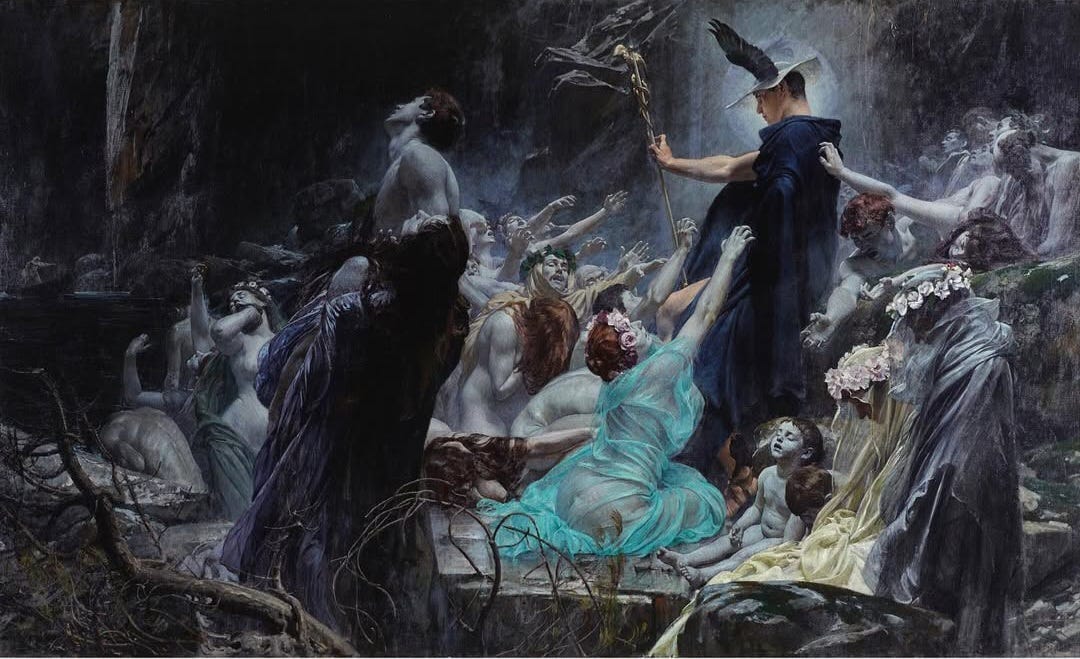ADOLF HIRÉMY-HIRSCHL - SOULS ON THE BANKS OF THE ACHERON, 1898
This is a Symbolist oil painting depicting a scene from Greek mythology. The artwork, housed at the Belvedere Palace and Museum in Vienna, portrays the god Hermes, also known as Psychopompos guiding the souls of the recently deceased to the banks of the Acheron, the "river of woe," one of the five rivers of the Greek underworld. The souls, depicted in anguish and desperation, crowd around Hermes, pleading to return to the world of the living. However, Hermes, characterized by a halo of light around his head, strides forward with divine resolve, ignoring their cries as he leads them toward Charon, the ferryman visible in the distance on the dark waters of the Acheron. Charon will transport the souls across the river to their final destination in the underworld, a journey that signifies the irreversiblity of death.
The souls’ tattered, translucent garments, which blur individual identities into a collective mass, symbolize the erosion of personal agency and social hierarchies, a key anxiety of the fin-de-siècl (end of century) marked by a pervasive sense of unease, mortality, and existential questioning that characterized late 19th-century Europe. The period saw rapid social changes—class upheavals, the rise of the working class, and challenges to aristocratic norms—leading to fears of societal disintegration. By depicting the souls as stripped of earthly distinctions, Hirémy-Hirschl reflects the era’s concern that modern progress was levelling humanity into an anonymous, vulnerable state, facing death’s impartiality.
In 1898, Hirémy-Hirschl, a Hungarian-born artist working in Vienna, was at the peak of his career but also on the cusp of being overshadowed by the emerging Secessionist movement, led by figures like Gustav Klimt. This piece was one of his last major works before his gradual decline in prominence. By 1900, Hirémy-Hirschl moved to Rome, and his work fell out of favor, only to be rediscovered decades later. The haunting power of 'Souls on the Banks of the Acheron' lies not only in its mythological narrative but also in its unconscious reflection of the artist’s own confrontation with impermanence, making it a deeply personal work created at a time when Hirémy-Hirschl stood on the metaphorical banks of his own professional Acheron.




